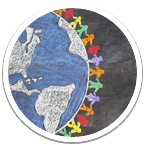Identifying mental health problems
Research suggests that migrants, and especially those with refugee backgrounds, may face increased risks of mental health problems. Especially for people who have lived in conflict zones or in poverty, mental health problems such as developmental and somatic issues may have remained unrecognised and untreated. As a result, the problems may have accumulated or become more difficult.
It can sometimes be challenging for professionals to recognise the symptoms and mental health problems of people from different backgrounds. The linguistic, cultural, and religious backgrounds of customers and professionals, as well as other factors such as education, can influence how they express, interpret and recognise mental health problems as well as the kind of support desired by customers, and provided by professionals, for mental health problems.
Listen to the customer's experiences
An essential part of any mental health assessment is the effort to understand the customer’s own experiences of their symptoms or problems. A professional can use tools such as the Cultural Formulation Interview to map the customer's thoughts and interpretations.
Cultural formulation interview (APA, pdf 395 kt)
Often the use of a similar open approach, in which the professional is interested in the customer’s own experiences and interpretations, facilitates the identification of problems, and increases the customer’s experience of being heard.
The following are examples of questions that can be used to help you identify potential problems:
- What are you worried about?
- How are you doing?
- How are you eating and sleeping?
- How do you see your future?
- Have you ever thought about hurting yourself or committing suicide?
The challenges and potential of structured symptom questionnaires
There are various symptom questionnaires and assessments that can be used to help identify mental health problems. However, the normal symptom questionnaires or other methods used in health care do not always work as intended to identify the mental health problems and risk factors for the wellbeing among customers from different backgrounds.
Factors that can significantly influence the use and reliability of different methods include:
- the customer’s reading and writing skills
- their educational background
- how familiar they are with filling in different forms
- how used they are to talking about mental health
- factors related to language and interpretation.
In particular, customers who have little or no formal education or literacy skills may not understand the purpose of the questionnaires nor be able to complete them independently in their own language.
The effectiveness of questionnaires is influenced by the language used in the translations, the dialect spoken by the customer, and the interpreter’s familiarity with translating questionnaires. Total scores from symptom questionnaires are not always sufficient for reliably identifying mental health problems.
Many symptom questionnaires or other methods can be used, however, if consideration is given to the individual characteristics of the customer and their background. In most situations a variety of methods, including symptom questionnaires, can be used flexibly for purposes such as supporting the interview process and clarifying or reviewing the questions and the customer's answers.
Use of multiple methods and cooperation with other professionals are key ways of identifying migrants’ mental health problems. Information obtained from people close to the customer may be valuable in assessing the customers’ situation and forming an overall impression.
Cultural formulation interview is one method that can be used for identifying mental health problems.
Cultural formulation interview (APA, pdf 395 kt)
More information on an expert video
In an expert video, Venla Lehti, a specialist in psychiatry, an associate professor of cultural development psychiatry, tells about identifying mental health problems and a cultural formulation interview.
References
Patanè, Martina ym. (2022) Prevalence of mental disorders in refugees and asylum seekers: a systematic review and meta-analysis. Global Mental Health 1–14.




